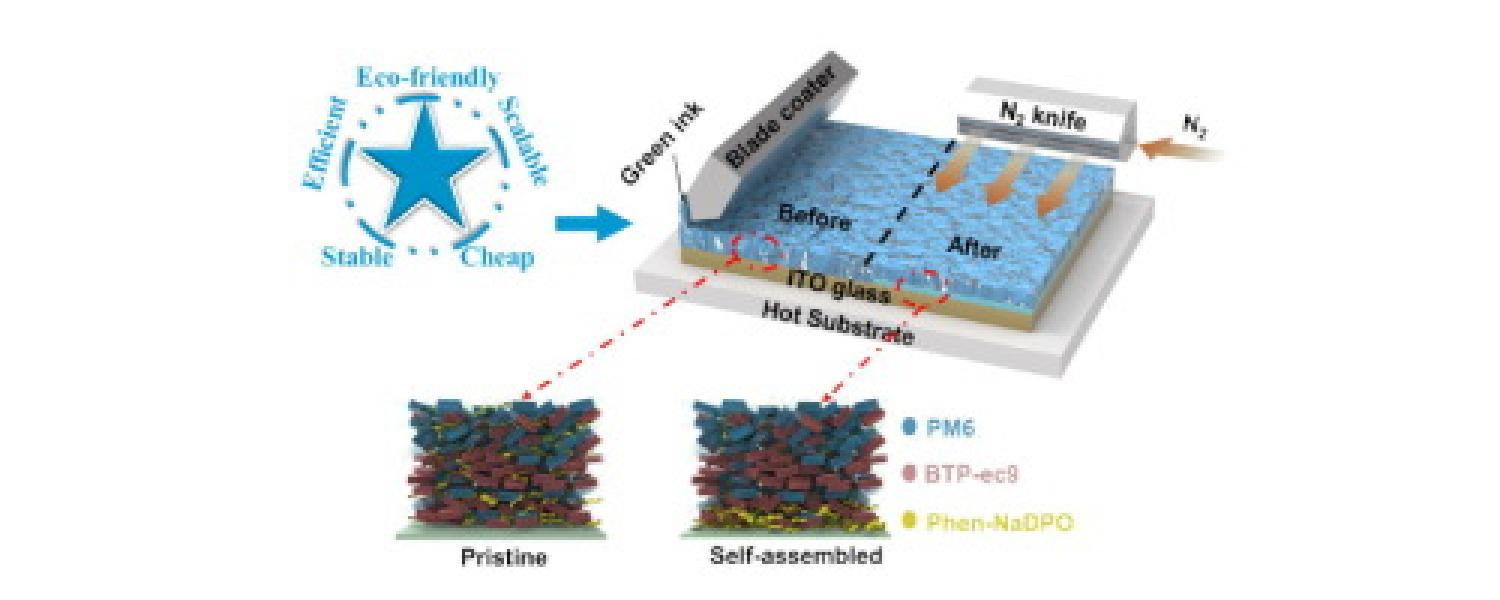
The ultimate goal of organic solar cells (OSCs) is to deliver cheap, stable, efficient, scalable, and eco-friendly solar-to-power products contributing to the global carbon neutral. However, simultaneously balancing these five critical factors of OSCs toward commercialization is extremely challenging. Herein, a green-solvent-processable and open-air-printable self-assembly strategy is demonstrated to synchronously simplify the device architecture, improve the power conversion efficiency (PCE) and enhance the shelf, thermal as well as light illumination stability of OSCs. The cathode interlayer (CIL)-free self-assembled OSCs exhibit the PCE of 15.5%, higher than that of traditional inverted OSCs of 13.0%, which is among the top values for both CIL-free self-assembled OSCs and open-air blade-coated bulk-heterojunction OSCs. The remarkable enhancements are mainly ascribed to the finely self-assembly, subtly controlled donor/acceptor aggregation rate, and delicately manipulated vertical morphology. Besides, this strategy enables 13.2% efficiency on device area of 0.98 cm2, implying its potential for scalability. These findings demonstrate that this strategy can close the lab-to-fab gap of OSCs toward commercialized cheap, stable, efficient, scalable, and eco-friendly OSCs.
